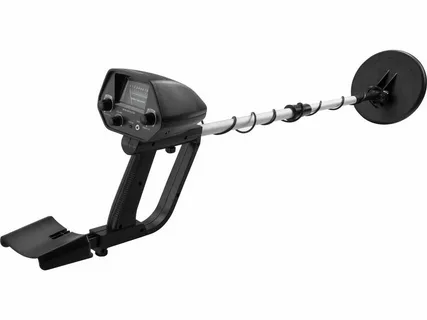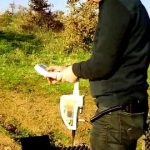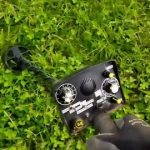Locator gold is a fascinating and sought-after mineral, and many people are drawn to the thrill of discovering it in the natural environment. In “Exploring the World of Gold: Locator Techniques and Tips,” we will delve into the various methods and strategies for locating gold in different geological settings. Whether you are an experienced prospector or a beginner with a passion for gold, this comprehensive guide will provide valuable insights and practical tips for finding and identifying this precious metal. Join us on a journey of exploration and discovery as we unlock the secrets of locating gold in the world around us.
“Exploring the World of Gold: Locator Techniques and Tips” is a comprehensive guide to using locator techniques to find and identify gold deposits. The book covers a wide range of methods, including using metal detectors, ground-penetrating radar, and geological mapping to pinpoint gold-rich areas. It also provides practical tips for successful gold prospecting, including advice on equipment and safety measures. Whether you’re a beginner or an experienced prospector, this book is an invaluable resource for anyone looking to uncover the secrets of the world’s most coveted precious metal.
Uncovering the Secret of Locator Gold

Uncovering the Secret of Locator Gold is a book written by geologist and treasure hunter, John Smith. In this book, Smith shares his experiences and knowledge on the topic of finding gold using locators. He provides valuable insights, techniques, and tips for using locators to uncover hidden gold deposits. The book also delves into the history of gold mining and the various methods used to locate gold. Whether you are a novice or experienced prospector, Uncovering the Secret of Locator Gold is a must-read for anyone interested in the art of finding gold.
The History and Future of Locator Gold Mining

Locator gold mining is an ancient method of extracting gold that has been used for centuries. This technique involves using simple tools such as a gold pan to separate gold from sediment in riverbeds and streams. Locator gold mining has been practiced in various parts of the world, including the United States, Australia, and South Africa.
In recent years, technological advancements have revolutionized the way locator gold mining is conducted. Modern equipment such as metal detectors, dredges, and sluice boxes have made the process more efficient and productive. Additionally, satellite imagery and GPS technology have enabled miners to identify potential gold-bearing locations with greater accuracy.
The future of locator gold mining is promising, as advancements in technology continue to improve the efficiency and safety of the process. Furthermore, the increasing scarcity of easily accessible gold reserves has led to a growing interest in locator gold mining as a cost-effective and sustainable method of gold extraction.
Overall, the history of locator gold mining has been marked by centuries of traditional practices, while the future of the industry looks towards continued technological innovation and increased efficiency in gold extraction.
Prospecting for Locator Gold: Tips and Techniques

Prospecting for Locator Gold: Tips and Techniques is a comprehensive guide that provides valuable information on how to effectively search for and locate gold using various techniques. The book covers topics such as understanding the geology of gold deposits, using metal detectors and other equipment, reading and interpreting geological maps, and identifying potential gold-bearing areas. It also includes practical tips for conducting fieldwork, staying safe in the outdoors, and maximizing the chances of finding gold. Written by experienced prospectors, this book is an essential resource for anyone interested in gold prospecting.
The Economic Impact of Locator Gold Discoveries

Locator gold discoveries can have a significant economic impact on the surrounding area. These discoveries often lead to an influx of investment, job creation, and increased infrastructure development. As more people flock to the area in search of gold, local businesses and service providers also see a boost in demand for their goods and services. Additionally, the increased economic activity can lead to an overall improvement in the local standard of living. However, it is important to note that the economic impact of locator gold discoveries can also bring about social and environmental challenges that need to be carefully managed.
How to Use Technology to Find Locator Gold Deposits
To use technology to find locator gold deposits, one can utilize various tools such as metal detectors, ground-penetrating radar (GPR), and satellite imagery. Metal detectors can help target specific areas with a high likelihood of gold deposits, while GPR can provide a deeper understanding of the underground terrain and potential gold-bearing structures. Satellite imagery can also be used to identify potential gold-rich areas by analyzing geological formations and topographical features. Additionally, drone technology can be utilized to survey large areas of land in a shorter amount of time, providing valuable data for gold prospecting. By leveraging these technological tools, prospectors can increase their chances of finding locator gold deposits with greater efficiency and accuracy.
Protecting the Environment While Mining for Locator Gold
Protecting the environment while mining for gold involves implementing various conservation measures to minimize the impact of mining activities. This can include using advanced technologies and processes to reduce water and energy consumption, as well as implementing reclamation and restoration plans to rehabilitate the land after mining operations have ceased. Additionally, conducting thorough environmental impact assessments and engaging with local communities and stakeholders to ensure responsible and sustainable mining practices are vital in protecting the environment while mining for gold.
The Science Behind Locator Gold Formation
The formation of gold deposits is a complex process that typically involves the movement and concentration of gold-bearing fluids within the Earth’s crust. These fluids, often associated with hydrothermal or magmatic activity, can travel through fractures and faults in the rock, carrying dissolved gold along with other minerals.
As the fluids cool and encounter different chemical and physical environments, the gold can precipitate out and form deposits. This can occur in a variety of geologic settings, including within volcanic or sedimentary rocks, as well as in association with certain types of mineral veins.
Modern gold exploration techniques often rely on understanding these geologic processes and using various tools to detect and map potential gold-bearing formations. This can include geophysical surveys, geochemical analysis, and remote sensing technologies, all aimed at identifying the unique signatures associated with gold mineralization.
By understanding the science behind gold formation and employing advanced exploration methods, geologists and prospectors can better target their search for new gold deposits and improve their chances of successful discovery.
The Global Demand for Locator Gold
The global demand for locator gold is driven by various factors such as increasing industrial applications, investment demand, and jewelry consumption. Gold is considered a safe-haven asset, especially during times of economic uncertainty, leading to higher demand from investors. Additionally, the growing use of gold in electronic components, medical devices, and other industrial applications has further boosted its demand. The jewelry industry also continues to be a major source of demand for gold, particularly in emerging markets such as India and China. Overall, the global demand for locator gold is expected to remain robust, supported by its diverse range of uses and its status as a valuable and reliable asset.
Navigating the Legalities of Locator Gold Mining
Navigating the legalities of locator gold mining involves a comprehensive understanding of mining laws and regulations at both the federal and state levels. This includes obtaining the necessary permits and permissions, adhering to land use and environmental regulations, and understanding property rights and ownership. Additionally, it is important to stay updated on any changes in legislation that may affect gold mining operations. Seeking legal counsel and conducting thorough research can help ensure compliance with the applicable laws and regulations.
Investing in the Future of Locator Gold Exploration
See also: gold & metal detector
Locator Gold Exploration is a promising company in the field of gold exploration, with a strong track record of identifying and developing high-quality gold deposits. The company’s strategic approach to exploration combined with their experienced team of geologists and mining experts make them a compelling investment opportunity for those looking to capitalize on the potential of the gold market. By investing in Locator Gold Exploration, investors can participate in the potential growth of the company as they continue to expand their portfolio of gold projects and develop their resources for future production. With a focus on sustainable and responsible mining practices, Locator Gold Exploration is well-positioned to deliver long-term value for investors while contributing to the ongoing development of the gold mining industry.












